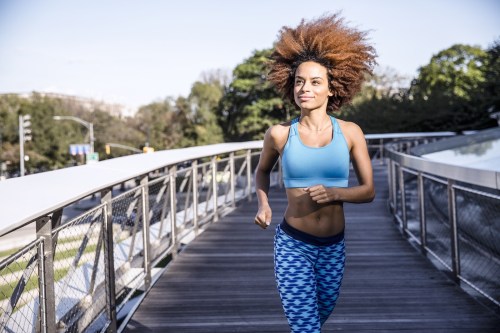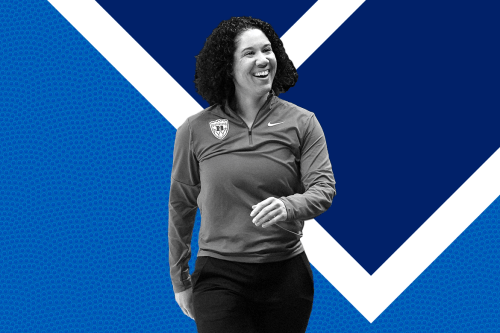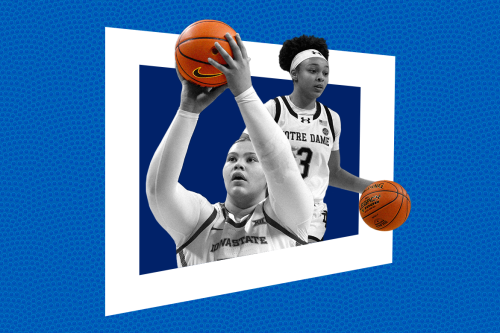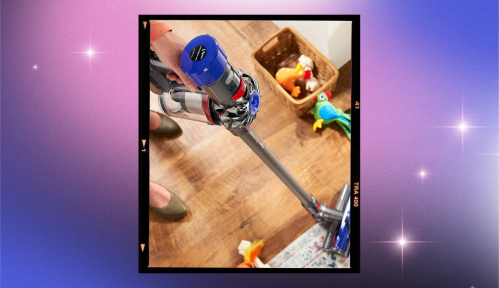As someone who can’t stand cardio, I’ve never experienced the runner’s high that everyone talks about. (Runner’s rage? With that I am very familiar.) But I’ve been tipped off to a practice that may finally spark that euphoric feeling—running while high.
Yep, you read that right. As legal marijuana reaches more and more states, a growing number of folks are using the plant before, during, and after their workouts, in an effort to boost both endurance and enjoyment.
Some people claim that sweating while stoned makes the experience more mindful. “I like to use cannabis when I’m exercising outdoors, typically a vape pen with a high sativa,” says California resident Diane Day Kim, co-founder of the Cannabish lifestyle and wellness newsletter. (There are two major types of cannabis: sativa is more energizing; indica is more relaxing.) “All of a sudden, I’ll notice the little mundane details of my neighborhood and that will make my exercise routine feel less boring. Being high also amplifies all of the great feelings of just breathing fresh air and feeling the sun on my skin.”
Others, like Colorado-based media agency co-founder Bri Rios, say cannabis gives the ability to hash out a tough workout. “It helps me laser focus on form, allows me to push through when fatiguing, and helps uplift me mentally,” says Rios, who eats half of a Cheeba Chews sativa edible before going on long-distance runs. “Sometimes finishing the last couple miles on a run can be brutal, but pushing yourself in a workout is one of the things that leads to the actual gains you want.”
There’s also evidence that cannabis can be a major incentive to get off the couch, despite lazy-pothead stereotypes to the contrary. An April 2019 study in the journal Frontiers in Public Health found that cannabis users who sweat under the influence work out more each week, on average, than cannabis users who don’t— they get around 45 minutes more aerobic exercise and about 30 minutes more anaerobic exercise—and around half of them claim that being high increases their motivation to exercise.
Meg, who asked to remain anonymous because she lives in a state where pot isn’t legal, can relate. “I always use a vape pen before I work out. It makes me enjoy my workouts,” she says. “Whether it’s going for an outdoor walk or run or just using my pilates reformer at home, cannabis gives me energy and the mental stimulation to get me through my workout concentrated and focused. And the time just flies by!”
And then there are athletes who choose to stay sober while they train, but use cannabis as part of their recovery routine. Meghan Stevenson, a certified running coach in California, is one of them. She has an arsenal of CBD balms, a low-THC indica vape pen, and a CBD/THC cannabis bath soak at the ready to soothe sore muscles. “I tend to prefer balms over vaping because I want to keep my lungs healthy for running,” she says. But when she needs a little extra pain relief, she says that delivery method makes a big difference.
But what does science say?
As part of my research, I heard from about a dozen people who use cannabis during exercise, and all claimed to have an elevated workout experience when marijuana was involved. But when it comes to actual data backing up the benefits of toking and training, it’s a little hazier.
In 2017, the Journal of Science and Medicine in Sport published a meta-analysis of 15 studies concluding that using cannabis during a workout doesn’t enhance aerobic performance or strength—and, in fact, researchers found the THC in the plant may sometimes impair people’s coordination to the point where it negatively impacts their workouts.
So why the discrepancy between the research and anecdotal experience? According to Michael Kennedy, MD, who authored the study, it could be because being high skews our perception of our own performance. “With any drug or supplement that causes a symptom—such as THC, which causes positive feelings in most, but not all—users will pair this feeling with improvement,” he says. “This has been shown in some studies of pain relief, where a placebo with a side effect relieved pain more than one that did not have a side effect.”
That said, it’s also important to note that cannabis-fueled workouts haven’t been studied in depth, and there may be more to the story than we currently know. “The science is in its infancy around athletic performance and recovery using cannabinoids, so it is premature to make any conclusions with certainty,” says Adam Grossman, cofounder and CEO of medicinal cannabis brand Papa & Barkley. “Unfortunately, there is very little clinical trial data in the literature around exercise (or anything else), since cannabis is still federally listed as a Class A narcotic.” Papa & Barkley has done its own placebo-controlled, longitudinal product studies on athletes, with results that Grossman calls “positive and exciting,” but he admits more research needs to be done before any definitive claims can be made.
Grossman adds that the existing research seems to be most promising in the area of recovery. “We know that CBD, or cannabidiol, is the chemical compound in cannabis that helps most with inflammation and certain chronic conditions, suggesting benefits around muscle regeneration and recovery. THC has shown to be effective at reducing muscle pain,” he says.
How to safely combine cannabis with your workouts
If you don’t want to be blitzed, but you still want the anti-inflammatory benefits of the cannabis plant, Grossman recommends consuming a non-psychoactive CBD tincture with fatty foods daily, at a dose of 15-30mg, to reduce inflammation. For more targeted relief of pain or soreness, he suggests using a topical balm, transdermal patch, or bath soak—for extra potency, look for one containing both CBD and THC. “We recommend rest as well in case of injury, since some athletes return to training before their injury is healed,” he adds. In other words, you should never use cannabis to push through your workouts when you’re hurt.
Conversely, if you’d like to experiment with mind-altering cannabis products during a workout—and you live in a state where they’re legal—remember less is more. (Think microdoses.) “What I’ve found over the years as I’ve incorporated cannabis into my fitness and recovery routines is that the key is to start very low, while keeping in mind that the body does not need a large amount of cannabis to be effective,” says cannabis-fueled exercise enthusiast Shauna Blanch, the Colorado-based co-founder of CBD skin care line Color Up.
If you have heart disease, Dr. Kennedy advises you to steer clear of whole-plant cannabis or any products containing THC during workouts. “While rare, there are numerous reports of acute cardiac events after smoking marijuana,” says Kennedy. (He doesn’t recommend working out while high under any circumstance.)
And there’s one more thing to consider: Not all cannabis products are created equal, so what works for one person might not work for you. “The biggest issue is efficacy,” says Stevenson. “I remember a balm I bought while traveling took away all the soreness in my legs after a half-marathon without any other side effects. Other balms I’ve purchased do very little. Most fall in between. Because CBD products and marijuana aren’t standardized the way similar products (like Icy Hot) are, you don’t always get the same results or even any results.” To reduce your chances of this happening, be sure you’re shopping at a reputable, registered marijuana dispensary or a CBD retailer that independently tests all of its products, like Standard Dose.
So who can help me find a treadmill class that starts at 4:20?
Check out 11 CBD-infused products that are perfect for post-workout recovery—and add this super-effective CBD deodorant to your gym bag while you’re at it.
Sign Up for Our Daily Newsletter
Get all the latest in wellness, trends, food, fitness, beauty, and more delivered right to your inbox.
Got it, you've been added to our email list.











